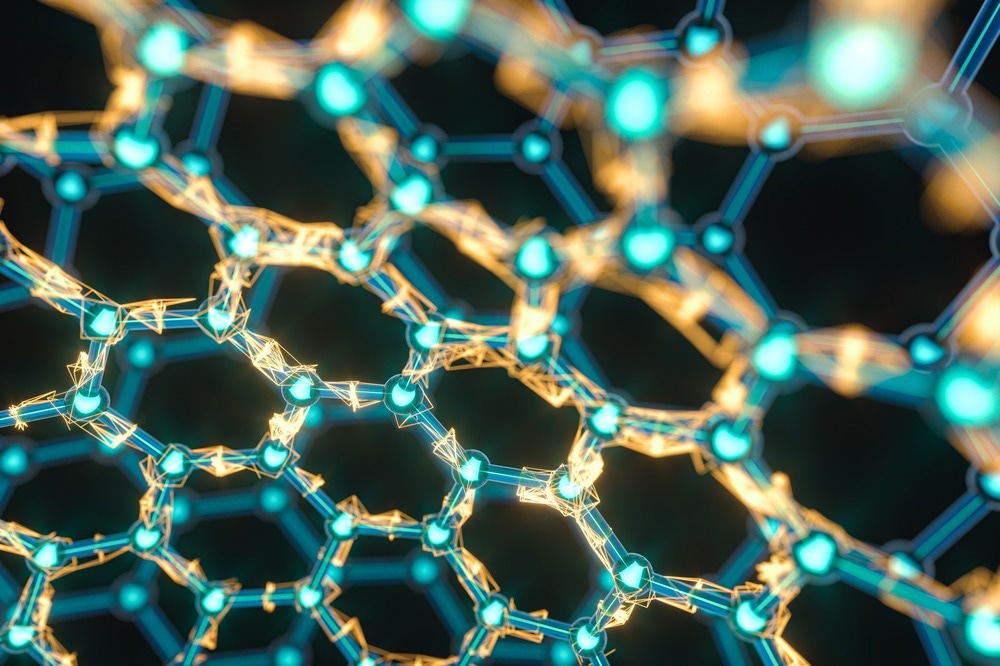A recent article published in Scientific Reports proposed the development of an alginate-chitosan biopolymer composite with decellularized extracellular matrix (dECM) bioink additive for organ-on-a-chip (OOAC) articular cartilage.

Image Credit: Vink Fan/Shutterstock.com
Background
Cartilage tissue engineering aims to emulate the native environment and gradient structure of chondrocytes to promote the restoration of their extracellular matrix (ECM). Recently, cartilage-derived native dECM has been used to mimic both the mechanical and chemical properties of tissues.
Alginate natural biopolymers are three-dimensional (3D) structures that can mimic the ECM, supporting cell growth and proliferation due to their adjustable porosity and facile polymerization. Another natural biopolymer, chitosan, is preferred for fabricating hydrogels replicating multi-layered gradient cartilage zones with specific ECM chemical compositions and characteristics.
Combining alginate and chitosan enhances cell attachment and proliferation in 3D cultures, favoring the typical rounded morphology of chondrocytes. This integration helps represent the cartilage microenvironment using a microfluidic system. The researchers prepared an alginate-chitosan composite hydrogel with dECM as a bioink additive for the articular cartilage tissue construct.
Methods
Human articular cartilage (1-2 mm) and bone marrow (2 mL) samples were collected from patients (n = 10) aged 23-70 years as part of a sports injury and knee replacement surgical procedure under aseptic conditions. Bioink (dECM) was prepared from cartilage explants through mechanical and enzymatic treatments.
Chondrocytes were isolated from the articular cartilage explants as cell pellets and cultured in a chondrogenic media. Bone marrow-derived mesenchymal stem cells (BMSCs) were also isolated and cultured using the density gradient method.
Isolated native chondrocytes and BMSCs were seeded in chondrogenic and BMSCs culture media (respectively) with bioink and grown as pellet cultures. Pellet size was monitored over three weeks. A pellet culture without bioink was used as a control.
Alginate polymer beads with bioink were prepared using chondrocytes and BMSCs suspended in chondrogenic media with sodium alginate solution supplemented with bioink. Control samples without bioink were also prepared. The cultured beads were paraffin-embedded, sectioned, and analyzed using a microtome and immunocytochemistry (ICC).
Various in vitro assays were performed, including cell viability, proliferation, histology, ICC characterization, quantitative polymerase chain reaction (qPCR) gene expression profiling, and scanning electron microscopy (SEM) for cellular attachment and aggregation.
The alginate-chitosan hydrogel was prepared with different concentrations of sodium alginate and chitosan solutions, polymerized with calcium chloride and glutaraldehyde, and mixed with and without bioink. Statistical analysis was performed for all samples (n = 10) in triplicates using GraphPad Prism software.
Results and Discussion
Native articular cartilage protein profiling showed multiple heterotypic collagens, sulfated glycosaminoglycan (GAG), and hydrophilic aggrecan as essential components for cartilage ECM restoration.
Confocal laser scanning microscopy (CLSM) characterization indicated that the ECM protein configuration can be incorporated into biomimetic tissue constructs, supporting chondrocyte and BMSC proliferation.
Pellet culture with bioink enhanced cellular density, ECM deposition, BMSCs differentiation, and collagen type II expression, demonstrating its suitability for sustaining chondrocytes and BMSCs in a differentiated state. Gene and protein expression analysis supported chondrocyte growth with the proposed bioink.
The hydrophilic alginate beads provided a conducive 3D microenvironment for BMSC chondrogenic differentiation. Cell proliferation occurred at the beads’ outer edge, suggesting greater exposure to the culture medium.
The alginate 3D beads culture with bioink additive created a niche for cell-cell and cell-matrix interactions, effectively stimulating neocartilage formation with enhanced collagen type II and aggrecan gene expression. This indirectly supports overall tissue-like structural integrity and organization as the composite bioink synergizes the benefits of both alginate and chitosan.
Different ratios of alginate and chitosan affected growth factor release kinetics, influencing BMSC chondrogenic differentiation. The optimal concentrations were 2 % w/v for both alginate and chitosan, providing an ideal compression modulus for the alginate-chitosan composite hydrogel, supporting the development of an OOAC model.
Conclusion
The dECM bioink significantly enhanced phenotypic and genotypic expression, with statistical significance at p<0.05 in the Student’s t-test. The cell-laden biopolymer bioink provided niche conditions for obtaining hyaline-type cartilage under culture conditions.
This study suggests a novel approach to advancing in vitro modeling techniques using bioink-laden alginate biopolymer to enhance the phenotype and gene expression of BMSC-induced chondrocytes towards hyaline-type cartilage. Integrating dECM bioink with alginate and chitosan biopolymers presents a strategic 3D approach in cartilage tissue engineering.
Journal Reference
Upadhyay, U., Kolla, S., Maredupaka, S., Priya, S., Srinivasulu, K., Chelluri, L. K. (2024). Development of an alginate-chitosan biopolymer composite with dECM bioink additive for organ-on-a-chip articular cartilage. Scientific Reports. doi.org/10.1038/s41598-024-62656-
Disclaimer: The views expressed here are those of the author expressed in their private capacity and do not necessarily represent the views of AZoM.com Limited T/A AZoNetwork the owner and operator of this website. This disclaimer forms part of the Terms and conditions of use of this website.